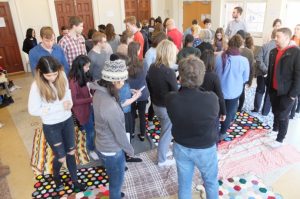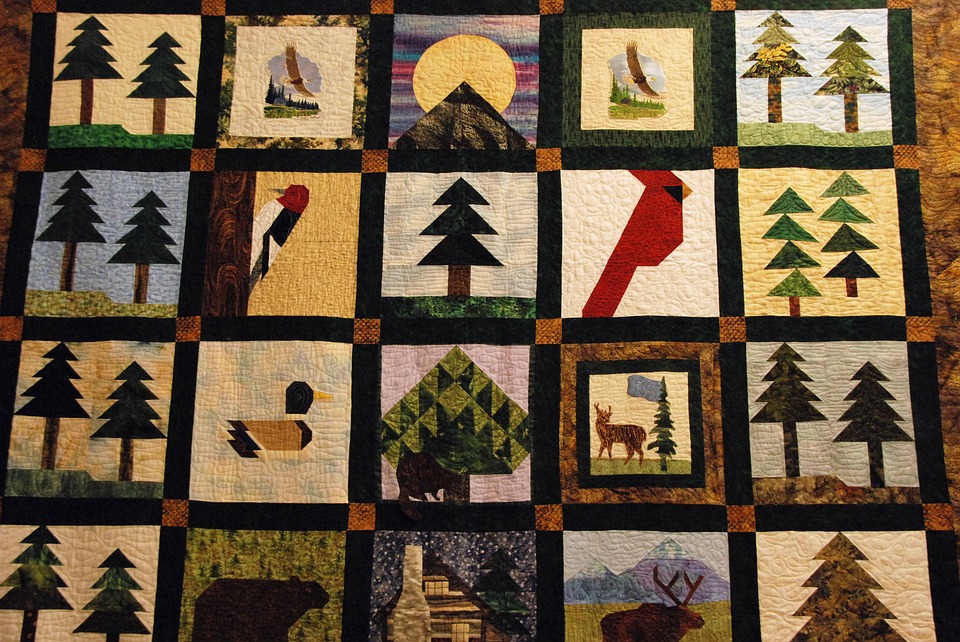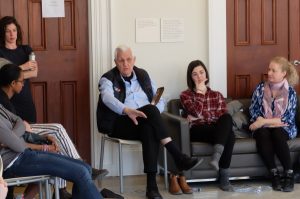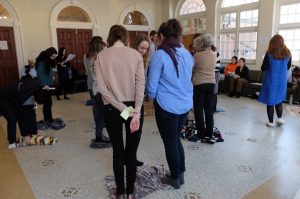
(Photos by Lucianna Ciccocioppo, used with permission)
I’ve heard of the Blanket Exercise before but I’ve never seen it conducted before. I spoke with an organizer and and talked with Elder Bob Phillips about this inclusive, visual and interactive learning experience that encompasses Indigenous law, history and reconciliation. The Blanket Exercise is a joint venture between KAIROS: Canadian Ecumenical Justice Initiatives and the Indigenous Initiatives Office at the Faculty of Law, and its purpose is to educate participants about Indigenous-settler relations in a 1.5 hour workshop. The various blankets represent land, and attendees are walked through 500 years of history during treaty-making, pre-European contact, colonization and the modern era. Participants also read from scrolls that highlight legal doctrines and other exploitation by colonizers, and they are also given cards that determine the outcome of their community/individual in a variety of historical settings. As the workshop continues, blankets are slowly removed, representing tracts of land taken by force or thievery, and those who were dealt the cards of disease or assimilation leave the blankets. Modern issues facing Indigenous peoples and communities are also discussed such as violence against Indigenous women, over-incarceration in prisons, substance abuse problems and lack of clean drinking water and housing on reserves are linked back to the loss of lands and culture. Elders are usually present during the exercise (such as Elder Bob Phillips for this particular one) and may lead a talking circle post-exercise for a discussion. Talking circles are a traditional discussion that come from First Nations leaders. They are used to facilitate respectful and uninterrupted discourse, usually with a sacred object such as a talking stick, wampum, peace pipe, etc. This ensures that everyone in the circle gets their chance to speak and is heard. This also offers the opportunity for those taking part in the Blanket Exercise to share their thoughts and ideas, what they learned or what they may want to see in the future. The Blanket Exercise occurs monthly and is currently only open to U of T Faculty of Law students, staff and faculty. However, if you would like to facilitate a Blanket Exercise, you can contact KAIROS (Click here for the KAIROS website) or the Indigenous Initiatives Office at the Faculty of Law (Click here to visit the IIO). I've contacted the organizer to see if I can attend, even though I'm not a law student. Sometimes, you've gotta try! I've also included a link to a Blanket Exercise video, if you interested in how the process works. (Click here for the Blanket Exercise Video) Ó:nen ki’ wáhi!


0 comments on “The Blanket Exercise”